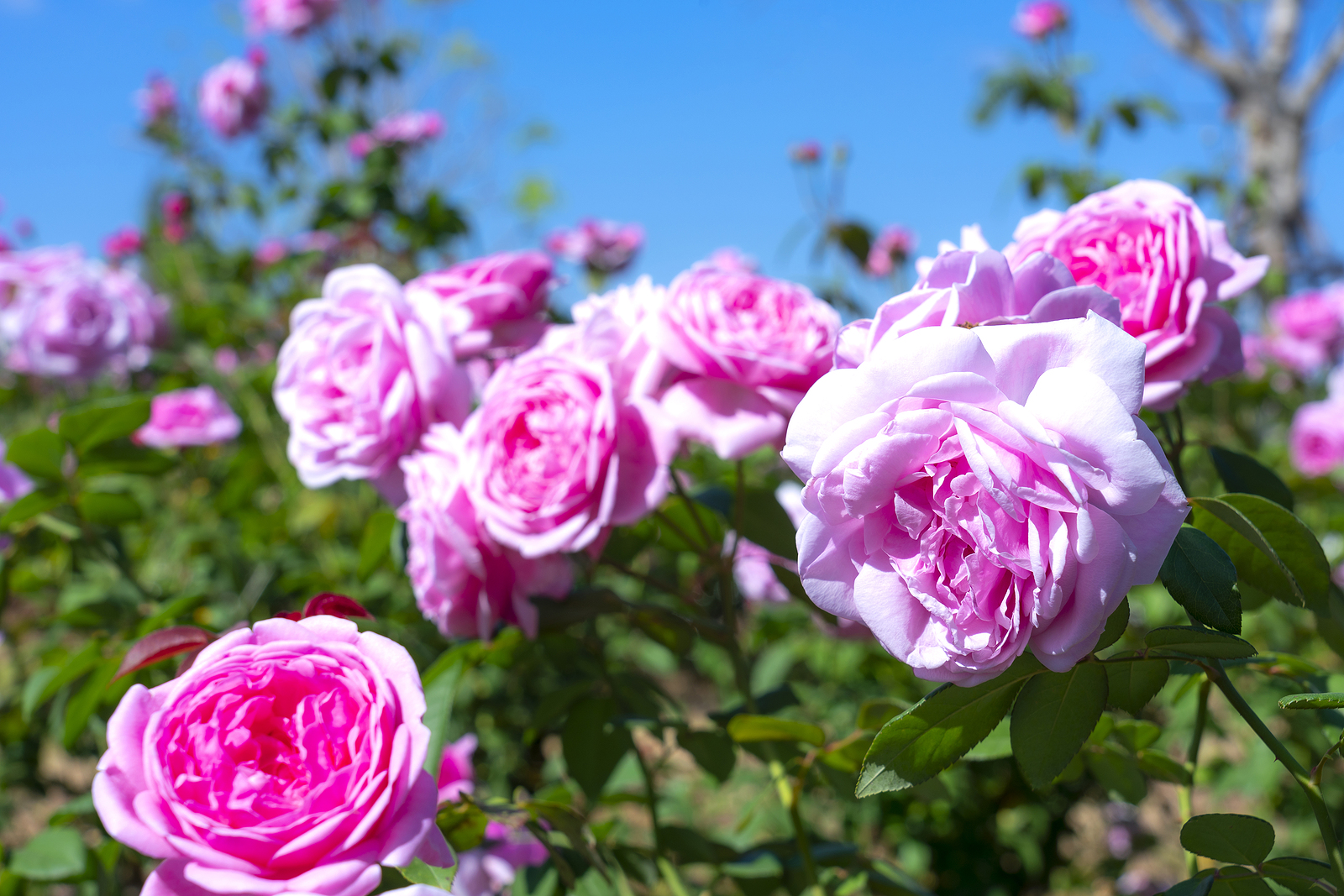Roses aren’t as difficult to grow as many beginning gardeners assume. The key to growing better roses in the summer is to choose varieties that are proven to do well in our climate.
Take into consideration the fact that some roses can better withstand the cold, while others are better able to withstand the heat. There are even a few types that can thrive in partial shade (floribundas in pastel colors are an example).
The most challenging time of year for roses is during the heat of summer. Knowing how to grow roses during this period will keep them gorgeous and healthy all year long.
Keep the soil insulated
Mulch is like a wonder drug in the landscape. Spread a 3-inch layer of it around the rose (keep it from touching the plant to avoid rot) and you’ll not only insulate the roots from heat but conserve soil moisture as well.
“The mulch will keep the roots 10 to 15 degrees cooler than the air temperature,” claims rosarian Leonard Trubisky.
How much water to give roses in summer
The biggest favor you can do for your roses is to water them deeply and keep the water off the foliage to avoid mildew.
To determine how much water to provide, stick a length of rebar into the soil. If you hit dry soil (you’ll know because it will become more difficult to push the rod into the soil), pull it out and measure how far it was inserted before it stopped. If it’s not two feet, keep watering and measuring until you hit that depth.
Then, wait until the top two inches of soil are dry to the touch before watering again. It is critical that you neither over- nor under-water the roses during the heat of summer.
Roses, being deep-rooted plants, are drought-tolerant and rarely require watering once established, especially when grown in moderate to heavy clay loams. However, in hot, dry conditions, they may require heavy irrigation about every 10-14 days.
Watering the soil in the evening rather than during the day reduces water loss from evaporation, keeping the leaves dry and preventing the spread of diseases such as black spots and mildew.
Get rid of faded blooms
Certain roses don’t require deadheading (the removal of dead or faded blooms) to continue blooming. Known as self-cleaning roses, this group includes the popular The Knock Out® family of roses.
If you need to deadhead, do it consistently throughout the summer. Cut the stem with a faded flower back to a cluster of five leaves, making the cut so that the cluster remains on the plant. Choose a cluster that is facing the direction you want the stem to grow.
Fertilizing roses in summer
Heat and fertilizer don’t mix and you may end up with a burnt rose bush if you fertilize in the middle of a hot day.
Since many rosarians suggest that July 31 should be the final fertilization for the year, many gardeners run into trouble. It’s hot in July!
If this is the case for you, apply fertilizer to your roses early in the evening or morning, before the weather heats up.
Use half the amount you normally do. If you’re new to roses, a 10-10-10 or 5-10-5 general-purpose fertilizer is fine. Never apply fertilizer to dry soil and thoroughly water the soil around the roses after fertilization.
This is basic summer rose-growing advice and if you need more information, turn to the experts of the American Rose Society.


